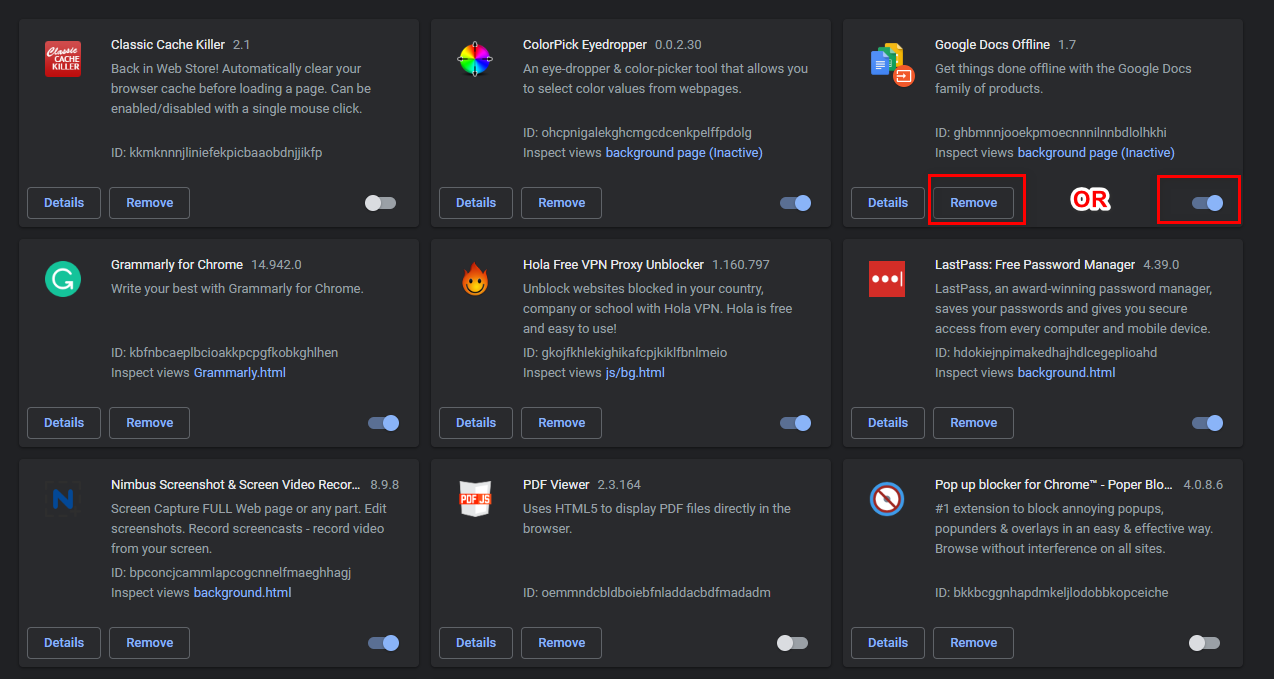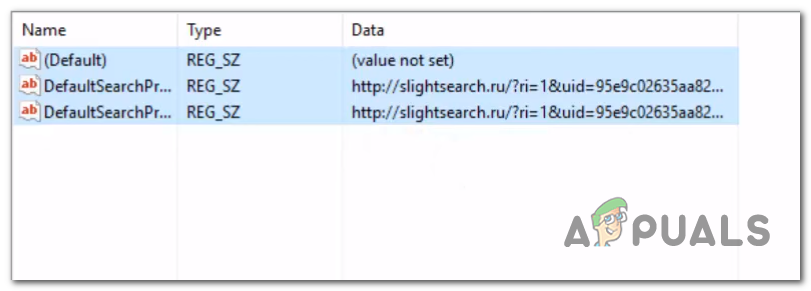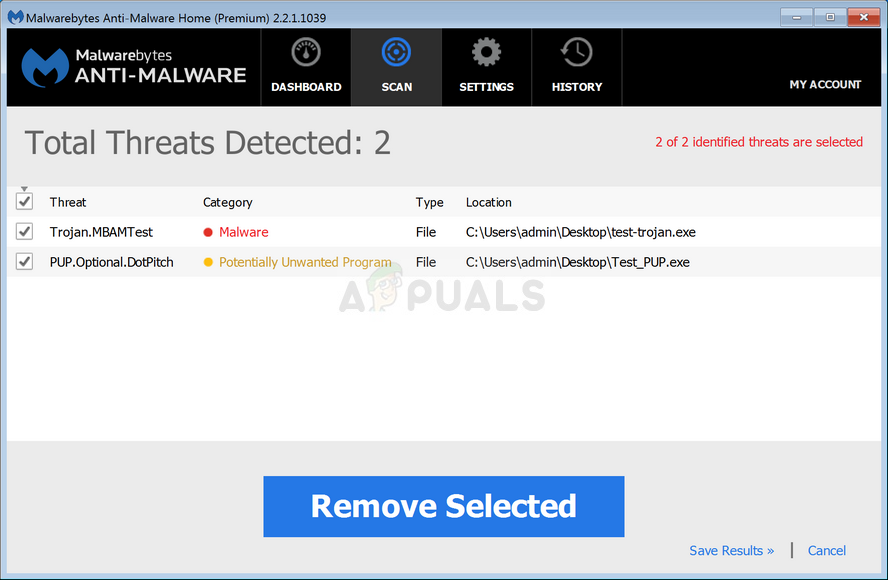This Setting is Enforced’ Error on Google Chrome
The ‘Setting is Enforced by an extension / your administrator’ error occurs on Google Chrome when the user tries to modify the default search engine, change the password or when trying to perform a certain action using an installed extension.

What’s causing the ‘Setting is Enforced by an extension / your administrator’ error?
- Google Docs Offline conflict – This particular extension is one of the most common causes that is known to trigger this error message. As it’s been confirmed by several affected users, this extension might trigger the error when the user tries to use other extensions to modify the default search behavior. In this case, you can resolve the issue by uninstalling or disabling the Google Docs Offline extension.
- Local Policy related to Google Chrome – As it turns out, local policy can also be responsible for the refusal of Google Chrome to change the default search engine with this particular error message. If this scenario is applicable, you can fix the issue by updating the policy via an elevated Command Prompt.
- Malicious registry key – Several affected users have confirmed that this issue can also be facilitated by a browser hijacker that establishes a series of policy inside the Registry. In this case, you can fix the problem by deleting the malicious policies via Registry Editors or by running a deep Malwarebytes scan.
Troubleshooting the ‘Setting is Enforced by an extension / your administrator’ error
Now that you understand what causes this issue – Let’s get started with the troubleshooting steps needed to resolve the ‘Setting is Enforced by an extension or your administrator error’
1. Uninstalling / Disabling Google Docs Offline
The most popular cause that will cause the ‘Setting is Enforced by an extension / your administrator’ error is an extension called Google Docs Offline. The functionality of this extension is meant to allow users to use Google Docs in offline mode.
Keep in mind that this extension is shipped with Google Chrome by default and it’s automatically enabled as soon as you open the extension. But the problem is, it tends to conflict with other 3rd party extensions. This is the reason why you will see the ‘Setting is Enforced by an extension’ notification when you’re trying to perform an action that has something to do with Google services.
If this scenario is applicable to your current situation, you can fix the problem swiftly either by disabling the Google Docs Offline extension or by uninstalling it altogether.
Here’s a quick guide on uninstalling or disabling the Google Docs Offline extension in order to resolve the ‘Setting is Enforced by an extension’ error:
- Open your Google Chrome browser and click on the action button on the top-right section of the screen.
- Next, go to More Tools > Extensions to open up the extension Google Chrome menu.

Opening the Extensions menu via the Action button - Once you’re inside the Extension menu, simply disable the toggle associated with Google Docs Offline.

Disabling or uninstalling the Google Docs Offline extension Note: Additionally, you can click on Remove and then confirm to uninstall the extension altogether.
- Restart your Google Chrome browser and repeat the action that was previously causing the error message to see if the issue is now resolved.
If you’re still encountering the same ‘Setting is Enforced by an extension’ error, move down to the next potential fix below.
2. Updating policy via an elevated Command Prompt
If you’re encountering the ‘This setting is enforced by your administrator’ error when trying to modify the default search engine in Google Chrome, it’s likely due to a local policy that will not let you do it unless you are signed in with the administrator account.
This policy is typically enforced by some type of malware, but some 3rd party extensions are also capable of producing this particular local policy.
If this scenario is applicable, you should be able to fix the problem by running a series of commands in an Elevated Command prompt that will override this policy, making it possible for all users to change the default search engine.
Here’s a quick guide on updating the local policy via an elevated Command Prompt:
- Press Windows key + R to open up a Run dialog box. Next, type ‘cmd’ inside the text box and press Ctrl + Shift + Enter to open up an elevated Command Prompt. If you’re prompted by the UAC (User Account Control), click Yes to grant admin access.

Type “cmd” into the Run dialog - Once you’re inside the elevated Command Prompt, type the following commands and press Enter after each one to override the local policy and eliminate the error message:
RD /S /Q "%WinDir%\System32\GroupPolicyUsers" RD /S /Q "%WinDir%\System32\GroupPolicy" gpupdate /force
- After every command is successfully enforced, restart your browser and see if the same problem is still occurring.
In case you’re still encountering the ‘This setting is enforced by your administrator’ error even after updating the local policy or this method wasn’t applicable to your scenario, move down to the next potential fix below.
3. Deleting the policy via Registry editor
If the method above didn’t work or you’re not comfortable with using the CMD terminal to fix the ‘This setting is enforced by your administrator’ error, you can also rely on Registry Editor to delete the local policy altogether.
The end result is ultimately the same – after the policy is removed, you will not encounter the ‘This setting is enforced by your administrator’ error when trying to change the default search engine in Google Chrome.
Here’s a quick guide on deleting the responsible policy via Registry Editor:
- Open up a Run dialog box by pressing Windows key + R. Inside the newly appeared text box, type ‘regedit’ and press Enter to open up Registry Editor. When you are prompted by the User Account Control (UAC), click Yes to grant admin access.

Regedit Command - Once you’re inside the Registry Editor, use the left-hand section to navigate to the following location:
HKEY_LOCAL_MACHINE\SOFTWARE\Policies\Google\Chrome
Note: You can also get there instantly by pasting the location directly into the navigation bar and pressing Enter.
- After you manage to get to the correct location, select the Google key from the left-hand side section, then move over to the right-hand and delete every text value that contains a suspicious link. Do so by right-clicking on the value and choosing Delete from the newly appeared context menu.

Deleting the suspicious text values - Once the values are successfully deleted, close the Registry Editor and restart your computer to allow the changes to be enforced.
- At the next startup sequence, repeat the action that was previously causing the ‘This setting is enforced by your administrator’ error and see if the problem is now resolved.
If the same issue is still occurring, it’s probably due to a malware that’s still plaguing your Google Chrome browser. In this case, move down to the final method below in order to ensure that you remove any type of malware that is capable of producing this kind of behavior.
4. Running a Malwarebytes scan
If you’ve come this far without a result, it’s very likely that you’re dealing with a pesky browser hijacker that managed to grow roots in a system folder. If this scenario is applicable, the only viable fix is to run a deep scan with a capable security scanner that is able to identify and remove any remnant files of the malware that we began to remove with Method 2 and Method 3.
If you pay a premium subscription to a capable AV, initiate a deep scan and see if it manages to find and remove any items. But if you’re looking for a free alternative that is very good with browser hijackers, we recommend a Deep Malwarebytes scan.






